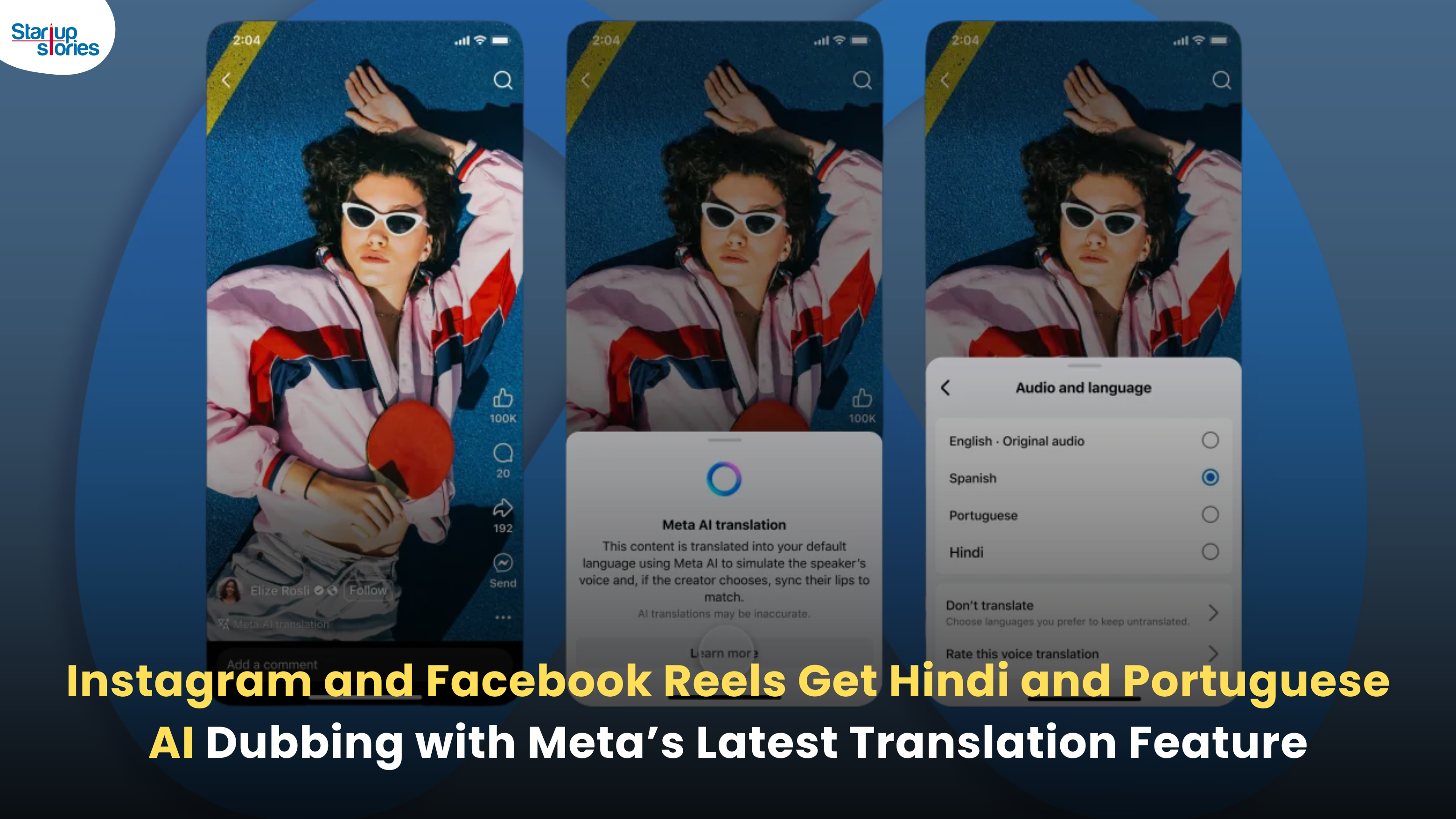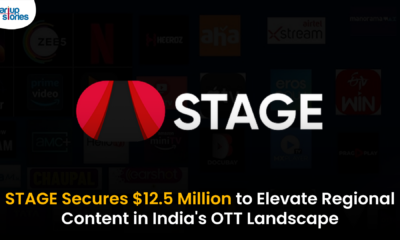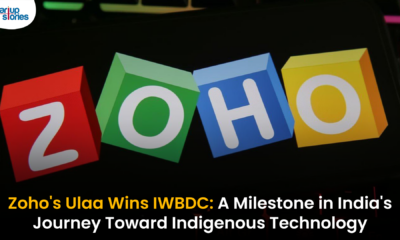Latest News
Blue Whale: A Horrifying Game Which Influences Teens To Commit Suicide

In today’s smart world everyone, especially, teenagers are addicted to smartphones. There are numerous applications for smartphones on stores for utility, for fun and entertainment. A terrifying application called Bluewhale “Suicide Challenge” is responsible for the suicide death of 130 teenagers in Russia, the place where this application started.
What is this Bluewhale “Suicide Challenge?”
This application brainwashes its users with challenges and leads them to commit suicide.
It challenges users to perform some dangerous activities and to upload pictures of the events. The challenge starts by urging the gamers to wake up at odd hours and watch horror videos, listen to haunting music and then quickly becomes more extreme. It compels teenagers to attempt self-harming and mutilating activities daily. This is to be conducted for 50 days and then the photographs of the sick activities should be uploaded on completion.The last challenge is to kill oneself. If one refuses to do so, the game creator threatens to harm the challengee’s loved ones, as he has the gamer’s personal information. This game can not be uninstalled once it is downloaded, it also hacks one’s phone and steals your information closing the option to move out. The application creators are looking for victims instead of teenagers looking for a game to play. It is available for a closed community. The creators of the game reach teenagers who include certain hashtags on social media and get involved with some social groups.
This is how teenagers are getting attracted!
It is mostly vulnerable teenagers who become victims of this horrible game. They get attracted to this game because of an invitation from the game itself, thinking it is a thrill. The youngsters are totally involved in the game for 50 days and get addicted to it. Sometimes they can’t even understand the severity of the game thinking that all the challenges can be faced to become a hero. Even teens who are closely engaged with the smart and technology world, can’t even grasp what is right and wrong. Starting with their friends and connected to them on social media, they are easily influenced.
Also, read | BAAHUBALI, AN OUTSTANDING EXAMPLE OF ‘MAKE IN INDIA’: MINISTER VENKAIAH NAIDU
This “Suicide Challenge” application came from Russia and has followers now in Portugal, Brazil, and the UK. Novaya Gazeta, an independent Russian newspaper is the first to report about the existence of the death groups on Russia’s popular social media network “Vkontakte.” According to their report, 130 teenage suicides were reported in Russia between November 2015 and April 2016 and all the victims are members of same social media groups on the internet.
Teenagers get attracted easily to new games for fun without much discernment about the subsequent consequences. Parents should observe what children are downloading on the internet. The Internet is a huge ocean and social media can be a big influencer. Both come with pros and cons, it behooves us to be informed, vigilant and careful.
Latest News
Zerodha Reports 23% Profit Decline in FY25 as Revenues Miss Target

Zerodha experienced a challenging FY25, as its revenue fell 11.5% to ₹8,847 crore and net profit dropped 22.9% to ₹4,237 crore. This decline reflects tougher regulatory conditions, lower trading volumes, and increased operational costs in the brokerage market, all of which impacted core earning segments for the company.
Despite these headwinds, Zerodha improved its operating margin to 63.78% and built up significant cash reserves, reporting ₹22,679 crore in bank balances. Salary expenses and director remuneration increased, but disciplined cost controls helped the company maintain profitability and a debt-free balance sheet. The drop in active clients and increased compliance costs further contributed to the profit contraction.
Looking ahead, Zerodha’s resilience is supported by its robust cash position and operational efficiency. Maintaining steady margins, diversifying product offerings, and investing in technology positions the company to withstand future regulatory fluctuations and changing market sentiment reinforcing its status as one of India’s leading brokerage firms.
Latest News
Zoho Pay Debuts as India’s New UPI Challenger, Taking on PhonePe, Paytm, and Google Pay

Zoho Corporation has expanded its fintech portfolio with the launch of Zoho Pay, a UPI-based payments app built to challenge India’s top digital payment giants such as PhonePe, Paytm, and Google Pay. The new app supports peer-to-peer transfers, bill payments, QR-based transactions, and merchant settlements in a streamlined interface. Available as both a standalone app and an integrated feature inside Zoho’s privacy-driven messenger Arattai, Zoho Pay enables users to handle chats and payments in one platform, emphasizing data privacy and Made-in-India innovation.
Through seamless integration with Arattai, Zoho Pay allows users to send or request payments, split expenses, and conduct UPI-based transactions directly in their chat windows. Users can link bank accounts, scan dynamic QR codes, and receive audio confirmations of payments, ensuring speed and security. This design mirrors the simplicity of India’s leading UPI apps but is powered by Zoho’s non-advertising, privacy-first model. The integration aligns with Zoho’s mission to build a self-reliant digital ecosystem, where messaging and money management coexist securely.
In the competitive digital payments market, Zoho Pay differentiates itself through its tight business software integration with apps like Zoho Books, Zoho Payroll, and Zoho Commerce, offering small businesses unified access to payments, billing, and accounting. The company is also expanding its reach with POS devices for merchants featuring UPI QR, card payments, and instant reconciliation tools. With founder Sridhar Vembu’s vision of a ‘Chat + Pay’ ecosystem, Zoho Pay reflects a bold step toward redefining India’s fintech scene with a secure, ad-free, and locally developed alternative to global payment platforms.
Latest News
Meta Expands AI-Powered Reels Translation to Hindi and Portuguese, Enhancing Global Creator Reach

Meta has expanded its AI-powered translation feature for Reels to include Hindi and Portuguese, joining English and Spanish in empowering creators to reach a broader global audience on Instagram and Facebook. Originally launched in August 2025 with support for English and Spanish, this update now allows creators to seamlessly translate and dub their short videos, breaking language barriers across some of the largest Reels markets worldwide. The AI technology mimics the creator’s voice tone and even offers lip-syncing to ensure the translated videos feel natural and engaging for viewers.
This enhancement is especially significant for India, the largest market for Facebook and Instagram, where over 600 million people speak Hindi. Content creators who are not fluent in Hindi can now easily access this vast audience, increasing their reach and engagement across diverse linguistic groups. To maintain transparency, all translated Reels are clearly labeled with “Translated with Meta AI,” and viewers can choose to switch translations on or off based on their preference.
In addition to voice dubbing, Meta is developing features to translate captions and text stickers on Reels, making content more accessible even without sound. These AI translation tools are available free for eligible public Instagram accounts and Facebook creator profiles with over 1,000 followers. This innovation reinforces Meta’s commitment to fostering cross-cultural content sharing and enhancing creators’ ability to connect with audiences around the world through short-form videos.














MM88
November 5, 2025 at 9:58 pm
Khám phá thế giới giải trí trực tuyến đỉnh cao tại MM88, nơi mang đến những trải nghiệm cá cược thể thao và casino sống động.
Kuwin
November 6, 2025 at 9:06 pm
kuwin sở hữu kho game đa dạng từ slot đến trò chơi bài đổi thưởng, mang đến cho bạn những giây phút giải trí tuyệt vời.
谷歌站群
November 7, 2025 at 4:39 pm
专业构建与管理谷歌站群网络,助力品牌实现全域流量的强势增长。谷歌站群
ios超级签
November 9, 2025 at 12:12 pm
苹果签名,苹果超级签平台,ios超级签平台ios超级签苹果企业签,苹果超级签,稳定超级签名
MM88
November 10, 2025 at 5:01 pm
Với giao diện mượt mà và ưu đãi hấp dẫn, MM88 là lựa chọn lý tưởng cho các tín đồ giải trí trực tuyến.
iwin
November 12, 2025 at 10:51 pm
iwin – nền tảng game bài đổi thưởng uy tín, nơi bạn có thể thử vận may và tận hưởng nhiều tựa game hấp
站群程序
November 14, 2025 at 4:35 am
搭载智能站群程序,自动化搭建与管理,为SEO项目提供核心驱动力。站群程序
J88
November 20, 2025 at 1:27 pm
Đến với J88, bạn sẽ được trải nghiệm dịch vụ cá cược chuyên nghiệp cùng hàng ngàn sự kiện khuyến mãi độc quyền.
GO88
November 21, 2025 at 12:35 am
Tham gia cộng đồng game thủ tại Go88 để trải nghiệm các trò chơi bài, poker phổ biến nhất hiện nay.